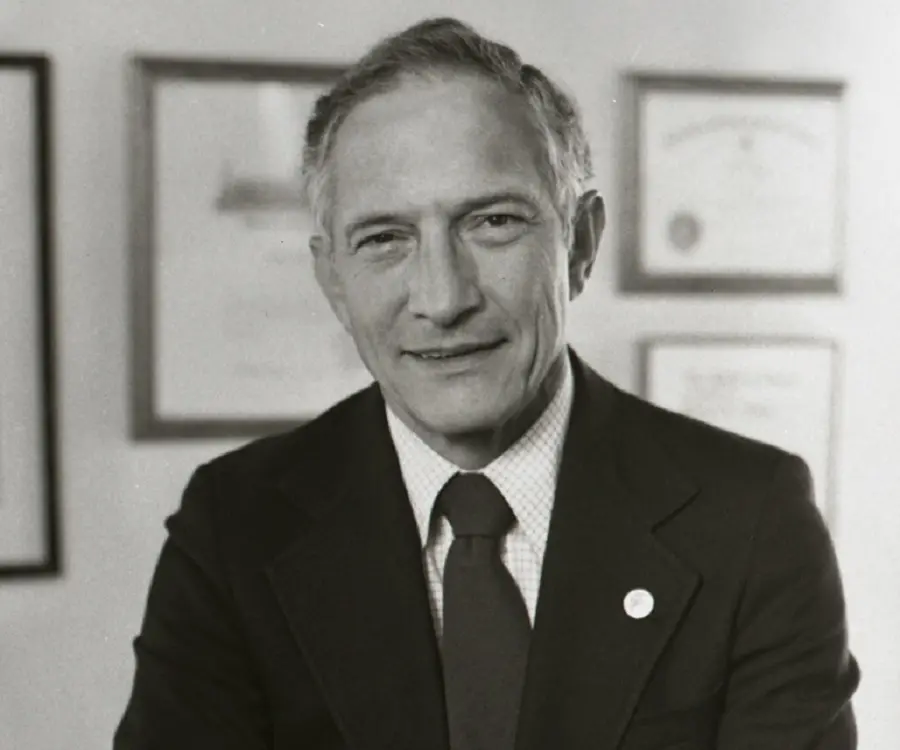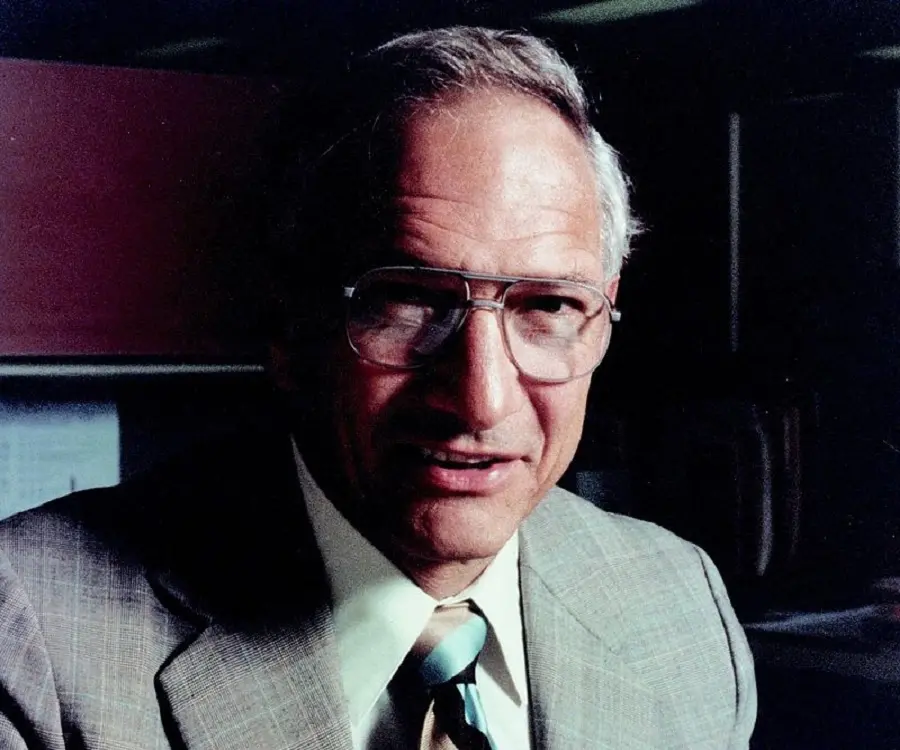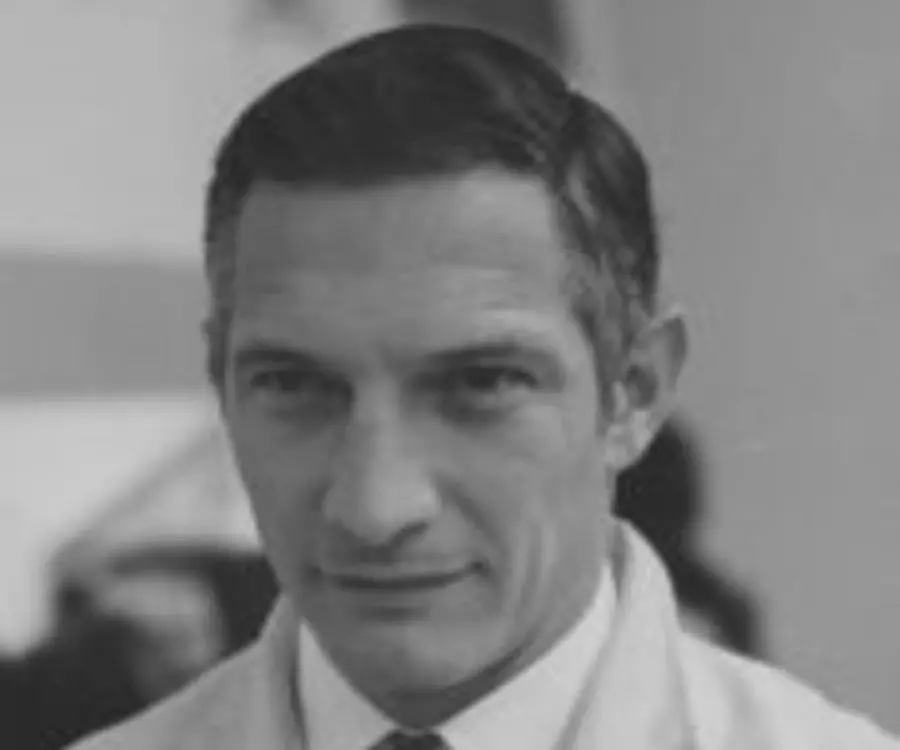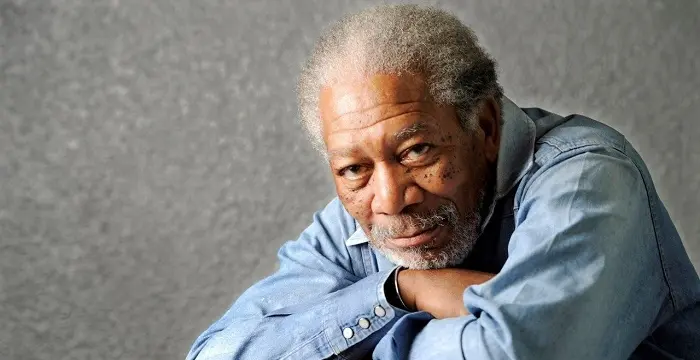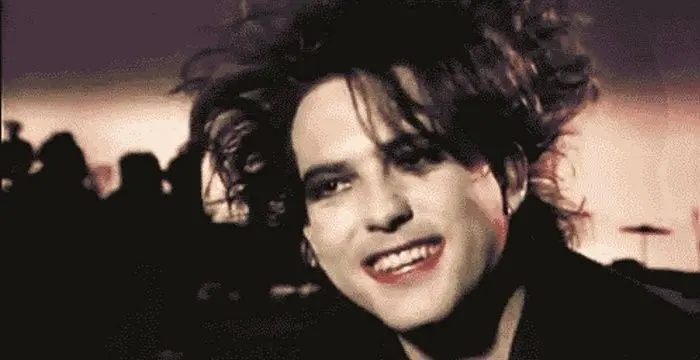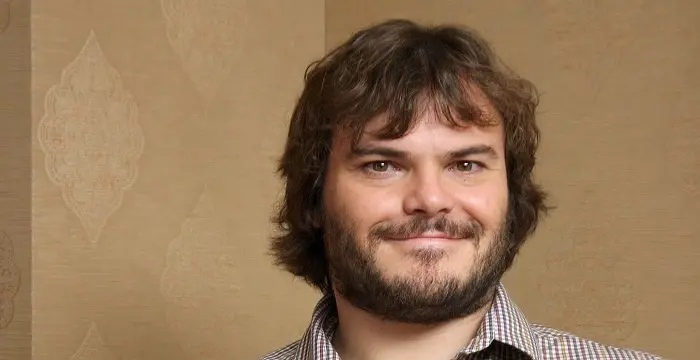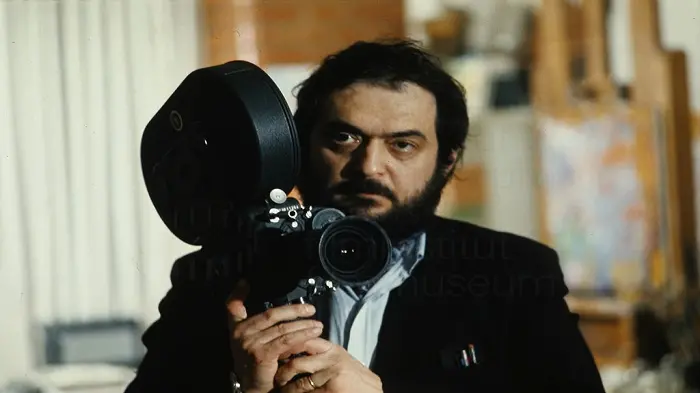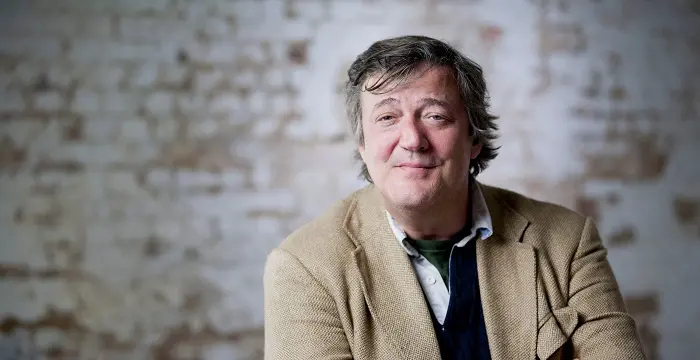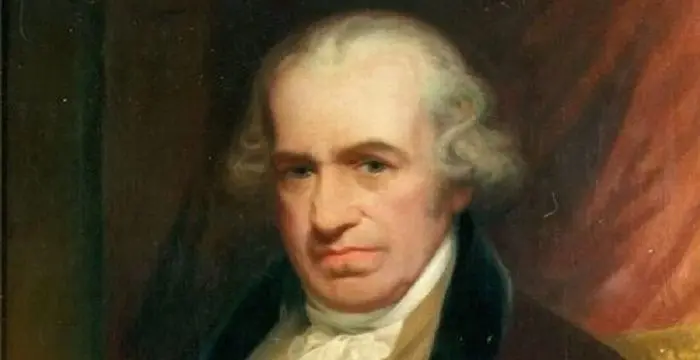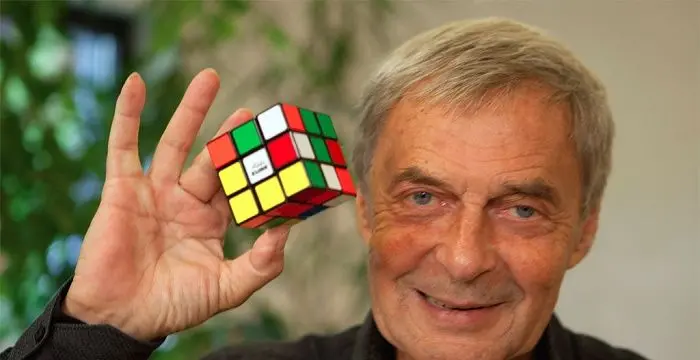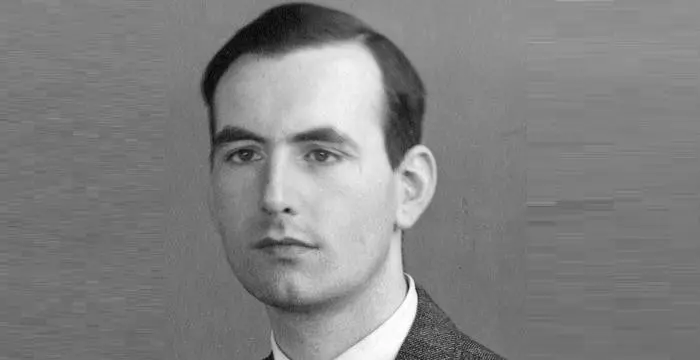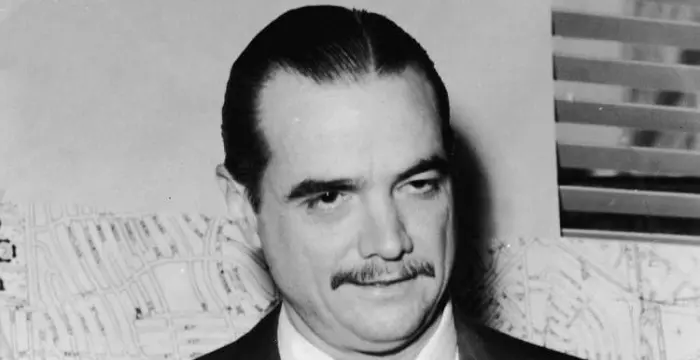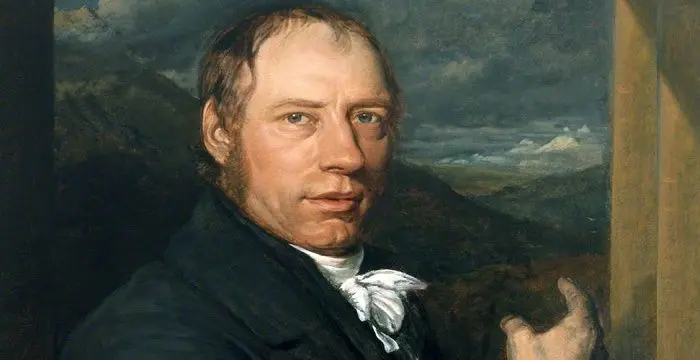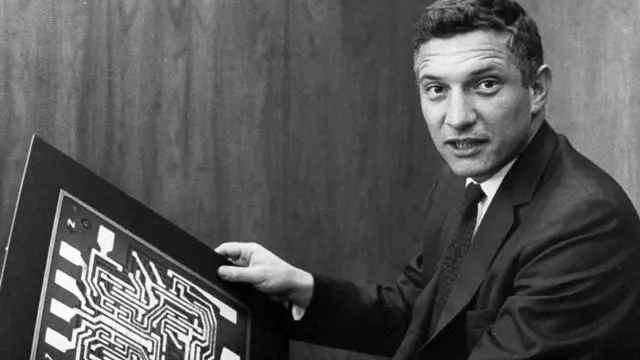
Robert Noyce - Co-inventor of the Integrated Circuit, Timeline and Childhood
Robert Noyce's Personal Details
Robert Noyce was the co-inventor of the integrated circuit
| Information | Detail |
|---|---|
| Birthday | December 12, 1927 |
| Died on | June 3, 1990 |
| Nationality | American |
| Famous | Atheists, Atheists/Agnostics, Massachusetts Institute Of Technology, Electronics Entrepreneurs, Electronics Engineers, Inventors & Discoverers, Co-inventor of the Integrated Circuit |
| Spouses | Ann Schmeltz Bowers, Elizabeth Bottomley |
| Universities |
|
| Notable Alumnis |
|
| Founder / Co-Founder |
|
| Discoveries / Inventions |
|
| Birth Place | Burlington |
| Gender | Male |
| Sun Sign | Sagittarius |
| Born in | Burlington |
| Famous as | Co-inventor of the integrated circuit |
| Died at Age | 62 |
Robert Noyce's photo
Who is Robert Noyce?
Robert Noyce was a man with remarkable feats – an inventor, a founder, a mentor and an engineer. From a young age, Noyce showed the brilliance in him with a high intellect and astute mind. He began his career as a research engineer for Philco Corporation and later Shockley Semiconductor Laboratory. However, his stint at both the companies was short-lived. In 1957, he co-founded the influential Fairchild Semiconductor Corporation. It was during this time that he co-invented the integrated chip that revolutionized the semiconductor industry. His thirst for more led him to co-found Intel Corporation in 1968. In 1971, he made his second breakthrough by giving the world the first microprocessor. The microprocessor ushered the era of the computer age and fuelled the personal computer revolution thus giving that stretch of California its well-famed name, the Silicon Valley. Intel’s huge success came in part due to Noyce’s relaxed management style. He wasn’t the flashy boss types and instead encouraged teamwork in employees. It was his unique style that has become a model for many Silicon Valley success stories. He also served as mentor to future bigwigs such as Steve Jobs
// Famous Atheists
Morgan Freeman
Morgan Freeman is an Academy Award winning actor known for his work in movies like ‘Street Smart’, ‘Driving Miss Daisy’ and ‘Million Dollar Baby’. This biography provides detailed information about his childhood, life, achievements, works & timeline.
Robert Smith
Robert Smith is an English musician and the lead singer of the British rock band, ‘The Cure.’ This biography of Robert Smith gives detailed information on his profile, childhood, life and timeline.
Jack Black
Jack Black is a renowned American actor-producer and voice artist. Explore this biography to learn more about his profile, childhood, career and timeline
Childhood & Early Life
Robert Noyce was born on December 12, 1927 to Reverend Ralph Brewster Noyce and Harriet May Norton, in Burlington, Iowa. His father was a Congregational clergyman. Robert Noyce was the third of the four sons born to the couple.
Noyce was brought up in a religious background, what with both his parents strictly adhering to church rules and regulations. However, his increasingly irreligious attitude led him to become an agnostic later in life.
Noyce was blessed with a shrewd mind and high intelligence. Graduating from Grinnell High School in 1945, he enrolled at the Grinnell College. His talent for mathematics and science helped him earn double majors in Physics and Mathematics and a Phi Beta Kappa key in 1949.
His sharp acumen and bent for physics took his academic studies forward as he gained admission at Massachusetts Institute of Technology for a doctoral program in physics. He received his doctorate degree in 1953 for a dissertation in transistors, a technology he was deeply fascinated by.
Career
Noyce commenced his career as a research engineer at Philco Corporation, Philadelphia. His profile included making transistors for the firm. However, his stint at Philco was brief, as he resigned after three years.
In 1956, he moved to California. Therein, he joined William Shockley’s Shockley Semiconductor Laboratory. However, Shockley and Noyce’s scientific vision clashed over the poor quality of management of the former. Having failed to force Shockley out of his management position, Noyce and his seven colleagues resigned from the company, thus becoming the ‘traitorous eight’.
Leading the ‘traitorous eight’ group of researchers, Noyce successfully negotiated with Fairchild Camera and Instrument Company to co-found Fairchild Semiconductor Corporation.
At Fairchild, Noyce was involved with producing transistors and other elements on large silicon wafers. He first cut the components out of the wafer, and later connected individual components with wires. Soon, Noyce realized that cutting the wafer apart was unnecessary process. He could instead manufacture an entire circuit on a single silicon wafer, which included transistors, resistors, and other elements, thus leading to the idea of the integrated circuit.
Noyce invented the integrated chip at Fairchild. It was essentially a silicon chip with a number of transistors all etched into it at once. His discovery was no less than a revolution for the semiconductor industry.
Noyce shared the patent of Integrated Circuit design with Jack Killby, an inventor working for Texas Instruments Incorporation. Though the two shared the credit for independently inventing the integrated circuit, Noyce’s Fairchild was granted the patent on a planar process as it was his technique that was subsequently used by manufacturers.
In 1968, along with Gordon Moore, Noyce left Fairchild Semiconductor and founded Intel. Soon, they were joined by Andrew Grove, yet another Fairchild colleague. Together the trio formed the Intel Corporation.
In 1971, Intel created the world’s first commercial microprocessor chip. The microprocessor, on a single silicon chip, combined the circuitry involved for both information storage and information processing.
The invention of the microprocessor was a huge advancement of technology and yet another technological revolution by Noyce. The mammoth success of microprocessors gave Intel a strong foundation. The company soon became the leading producer of microprocessor chips.
Until 1975, Noyce served as the President of Intel. Same year, he was made chairman of the board of directors, a position which he served until 1978.
In 1978, he became the chairman of the Semiconductor Industry Association. In this new-found position, he looked after the growing economic concern of the semiconductor industry especially in terms of foreign competition.
Major Works
Noyce’s career experienced its first breakthrough while at Fairchild Corporation when he invented the integrated chip. It was a chip of silicon that had many transistors etched to it all at once. The invention revolutionized the way semiconductor industry worked until then.
Noyce second big career breakthrough came right after he founded Intel in 1968. He introduced to the world the first microprocessor and with that started the glorious era of the computer age. Microprocessor included multiple circuits on a single silicon chip, thus allowing both information storage and information processing.
In addition to inventing the integrated chip and microprocessor, Noyce is credited with setting the tone and work culture of Silicon Valley. His ‘roll up your sleeves’ management style gave employees enough room to accomplish what they desired to. He broke the stereotype of corporate culture in California and shunned strict atmosphere for relaxed working environment that was less structured and more casual.
Awards & Achievements
Over his lifetime, Noyce had over 16 patents to his name.
In 1987, President Ronald Reagan conferred him with the prestigious National Medal of Technology.
In 1989, he was inducted into the US Business Hall of Fame by then President George H. W. Bush.
In 1990, during the bicentennial celebration of the Patent Act, he along with Jack Killby and John Bardeen received the highly-esteemed Lifetime Achievement Medal.
Personal Life & Legacy
He married Elizabeth Bottomley in 1953. The couple was blessed with four children, William B., Pendred, Priscilla, and Margaret. After almost twenty years of marriage, the couple legally separated in 1974.
Following his divorce with Bottomley, he married Ann Schmeltz Bowers. After her stint as the Director of Personnel for Intel Corporation and Vice President of Human Resource for Apple Inc, she currently serves as the Chair of the Board and founding trustee of Noyce Foundation.
A lifelong swimmer and state level diving champion, Noyce experienced a severe heart attack following his morning swim routine on June 3, 1990. He was admitted at Seton Medical Center in Austin, Texas where he breathed his last.
Posthumously, in 1991, the Noyce Foundation was founded by his family to help aid public education in mathematics and science of grade K-12 children.
His alma mater, Grinnel College named its science building after him.
Trivia
He is popularly referred to as the Mayor of the Silicon Valley
// Famous Atheists/Agnostics
Morgan Freeman
Morgan Freeman is an Academy Award winning actor known for his work in movies like ‘Street Smart’, ‘Driving Miss Daisy’ and ‘Million Dollar Baby’. This biography provides detailed information about his childhood, life, achievements, works & timeline.
Stanley Kubrick
Stanley Kubrick was a screenwriter and film director known for his movies like ‘The Clockwork Orange’ and ‘The Shining’. This biography of Stanley Kubrick provides detailed information about his childhood, life, achievements, works & timeline.
Stephen Fry
Stephen Fry is a comedian, actor, author, television and radio presenter. Read the biography and know all about his childhood, career, profile and timeline.
Robert Noyce's awards
| Year | Name | Award |
|---|---|---|
Other | ||
| 1989 | John Fritz Medal | |
| 1979 | Faraday Medal | |
| 1980 | National Medal of Science for Engineering | |
| 0 | 1987 - National Medal of Technology and Innovation | |
| 0 | 1978 - IEEE Medal of Honor | |
| 0 | 1989 - Charles Stark Draper Prize | |
Robert Noyce biography timelines
- // 12th Dec 1927Robert Noyce was born on December 12, 1927 to Reverend Ralph Brewster Noyce and Harriet May Norton, in Burlington, Iowa. His father was a Congregational clergyman. Robert Noyce was the third of the four sons born to the couple.
- // 1945 To 1949Noyce was blessed with a shrewd mind and high intelligence. Graduating from Grinnell High School in 1945, he enrolled at the Grinnell College. His talent for mathematics and science helped him earn double majors in Physics and Mathematics and a Phi Beta Kappa key in 1949.
- // 1953His sharp acumen and bent for physics took his academic studies forward as he gained admission at Massachusetts Institute of Technology for a doctoral program in physics. He received his doctorate degree in 1953 for a dissertation in transistors, a technology he was deeply fascinated by.
- // 1953 To 1974He married Elizabeth Bottomley in 1953. The couple was blessed with four children, William B., Pendred, Priscilla, and Margaret. After almost twenty years of marriage, the couple legally separated in 1974.
- // 1956In 1956, he moved to California. Therein, he joined William Shockley’s Shockley Semiconductor Laboratory. However, Shockley and Noyce’s scientific vision clashed over the poor quality of management of the former. Having failed to force Shockley out of his management position, Noyce and his seven colleagues resigned from the company, thus becoming the ‘traitorous eight’.
- // 1968In 1968, along with Gordon Moore, Noyce left Fairchild Semiconductor and founded Intel. Soon, they were joined by Andrew Grove, yet another Fairchild colleague. Together the trio formed the Intel Corporation.
- // 1968Noyce second big career breakthrough came right after he founded Intel in 1968. He introduced to the world the first microprocessor and with that started the glorious era of the computer age. Microprocessor included multiple circuits on a single silicon chip, thus allowing both information storage and information processing.
- // 1971In 1971, Intel created the world’s first commercial microprocessor chip. The microprocessor, on a single silicon chip, combined the circuitry involved for both information storage and information processing.
- // 1975 To 1978Until 1975, Noyce served as the President of Intel. Same year, he was made chairman of the board of directors, a position which he served until 1978.
- // 1978In 1978, he became the chairman of the Semiconductor Industry Association. In this new-found position, he looked after the growing economic concern of the semiconductor industry especially in terms of foreign competition.
- // 1987In 1987, President Ronald Reagan conferred him with the prestigious National Medal of Technology.
- // 1989In 1989, he was inducted into the US Business Hall of Fame by then President George H. W. Bush.
- // 1990In 1990, during the bicentennial celebration of the Patent Act, he along with Jack Killby and John Bardeen received the highly-esteemed Lifetime Achievement Medal.
- // 3rd Jun 1990A lifelong swimmer and state level diving champion, Noyce experienced a severe heart attack following his morning swim routine on June 3, 1990. He was admitted at Seton Medical Center in Austin, Texas where he breathed his last.
// Famous Inventors & Discoverers
Nikola Tesla
Nikola Tesla was a Serbian-American inventor, best known for his development of alternating current electrical systems. This biography of Nikola Tesla provides detailed information about his childhood, life, achievements, works & timeline.
Thomas Newcomen
Thomas Newcomen was a British inventor who developed the world’s first steam engine. Browse through this biography to learn in details about his life, career, works and timeline.
Erno Rubik
The famous inventor and educationist, Erno Rubik is known world-wide for his invention the ‘Rubik’s Cube’. To know more about the childhood, profile, timeline and career of this famous architect-inventor read on.
Ernst Ruska
Ernst Ruska was a German physicist who invented the electron microscope. Check out this biography to know about his childhood, life, achievements, works & timeline.
Howard Hughes
Howard Hughes was an American aviator, business tycoon, philanthropist and also a film maker. This biography explores his childhood, career, achievements and timeline.
Richard Trevithick
Richard Trevithick was a British inventor who was the pioneer of steam-powered road and rail transport. Check out this biography to know about his childhood, family life, achievements and fun facts about him.
Robert Noyce's FAQ
What is Robert Noyce birthday?
Robert Noyce was born at 1927-12-12
When was Robert Noyce died?
Robert Noyce was died at 1990-06-03
Where was Robert Noyce died?
Robert Noyce was died in Austin
Which age was Robert Noyce died?
Robert Noyce was died at age 62
Where is Robert Noyce's birth place?
Robert Noyce was born in Burlington
What is Robert Noyce nationalities?
Robert Noyce's nationalities is American
Who is Robert Noyce spouses?
Robert Noyce's spouses is Ann Schmeltz Bowers, Elizabeth Bottomley
What was Robert Noyce universities?
Robert Noyce studied at Massachusetts Institute Of Technology (MIT), Massachusetts Institute of Technology, Grinnell College
What was Robert Noyce notable alumnis?
Robert Noyce's notable alumnis is Massachusetts Institute Of Technology (MIT)
Which company or organization was founded by Robert Noyce?
Robert Noyce was the founder/co-founder of Intel, Semiconductor Industry Association
What is Robert Noyce's inventions/discoveries?
Integrated Circuit was invented (or discovered) by Robert Noyce
What is Robert Noyce's sun sign?
Robert Noyce is Sagittarius
How famous is Robert Noyce?
Robert Noyce is famouse as Co-inventor of the integrated circuit
